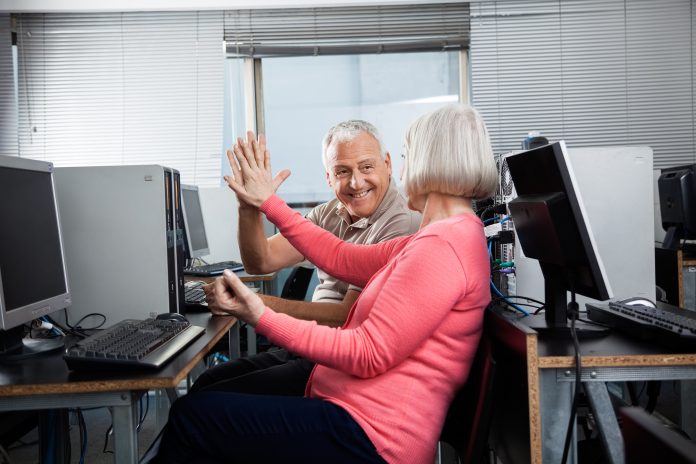Many seniors believe that they can’t really learn new things… a new language, a new habit or some hobby or game. This thought stops them from challenging themselves cognitively and in ways that will actually result in a better life experience. Overcoming obstacles, learning new things and continuing to grow and expand are hallmarks of the consciously aging senior. But what can be done about this pervasive idea that the aging brain has some kind of diminished power? You may be surprised to know that the science of Neuroplasticity debunks the idea that seniors can’t learn new things.
Neuroplasticity is the science that has proven that the brain is malleable, and can be affected by thought & blood flow. It teaches us that, when challenged, the brain changes itself to meet new demands. Nerve cells, called neurons, in our brains physically grow nerve endings to connect with other neurons when we learn new things! The more we experience and learn, the more connections are formed. And we know that any intervention that successfully prevents or slows decline will have positive effects, not only cognitively, but also in better gait and balance.1 as well as better overall mood and quality of life.
Noted motivational speaker Tony Robbins famously said, “When you stop growing, you start dying.” Learning is part of growing and is an essential component to healthy aging. So what’s the best way to learn something new? The keys are increasing blood flow and repetition. So take a walk, do some chair exercises… anything that will get your heart pumping just a bit faster than at rest.
When it comes to practicing something new, think back to when you first learned to drive a car. Did you know how to drive the SECOND time you got behind the wheel? Of course not, it took practice and lots of it before you were a really good driver. And it’s no different now with anything else you want to learn. You need practice to master a new skill – at any age.
Be a Savvy Senior. Tackle something new! First elevate blood flow and then start learning and then do it again. And again. And again! Repetition is the cement that holds those new memories in place.























